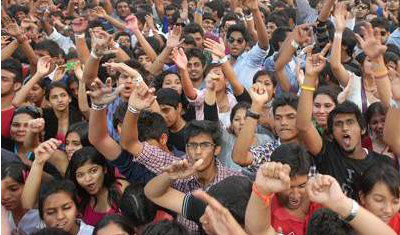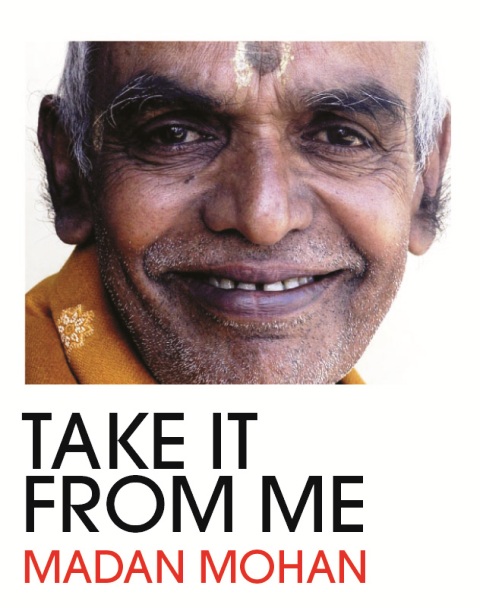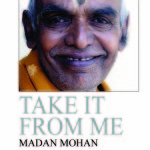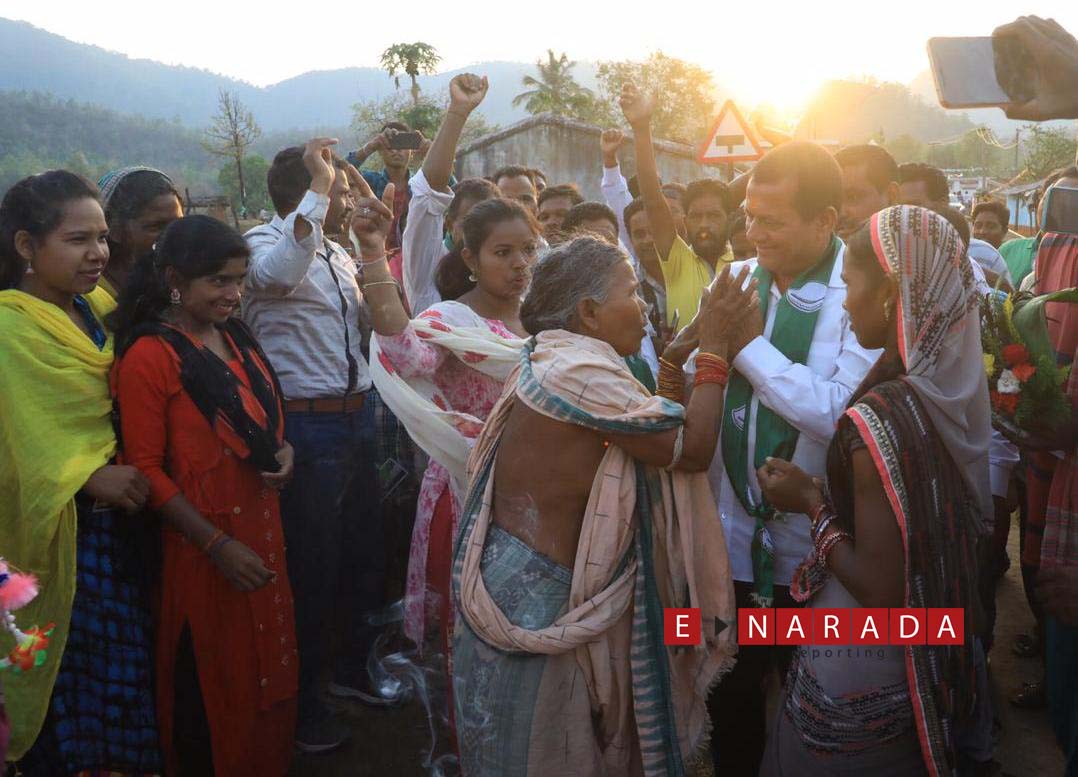ENARADA, Hubli
By MATHIHALLI MADAN MOHAN
A sort of Tsunamic effect in voting on the polling day is expected to settle the question of who outsmarts who between the Congress and BJP who are involved in a sea saw tussle for the 28 loksabha seats from Karnataka.
BJP is going all out to improve if not retain the tally of 19 seats it had won in 2009. The Congress which had been able to win only six seats last time wants to replicate its win of 2013 assembly election to substantially improve its loksabha tally. Every seat that the Congress prevents BJP would put break on the march of the prime ministerial candidate towards the Delhi throne.
The Tsunami comes in the form of first time voters numbering more than 25 lakhs, constituting little more than 5% of the 462 lakh electorate in Karnataka. The significance of the impact lies in the fact both Congress and BJP are almost equally poised as for as the their electoral base in Karnataka in concerned, and in 2013 assembly election, the gap between the electoral base was narrow, with Congress raking up 114 lakhs as against 112 lakhs of the BJP.
The increase in the enrolment has acquired Tsunamic dimensions this time. As against an average of 35 lakhs increase in the five year period separating two elections, 25 lakhs, has been added within one year between the assembly elections of 2013 to the parliament elections of 2014. According to the Chief Electoral Officer the enrolment rose by 15 lakhs within three months between January and March this year.
The average increase of electorate in the 28 parliamentary constituencies has been around 90,000, ranging from the lowest of 51,000 in Kanara to 2.74 lakhs in Bangalore North. The increase is more than one lakh in the five parliamentary constituencies of Gulbarga (1.67 lakhs), Mysore (1.10 lakhs), Bangalore (1.66 lakhs), Bangalore North (2.74 lakhs), Bangalore Central (1.75 lakhs) and Bangalore South (2.14 lakhs). In six constituencies of Bijapur, Raichur, Bellary, Haveri, Davangere, Mandya and Chickballapur, it has been more than 90,000.
This newly enrolled voters, constitutes one bulk segment of voters which are sure voters, which would not miss the opportunity to exercise their constitutional right to cast vote in an elections, unlike their seniors. The paradox has been that the most of the poll analysts both of the print and electronic media have not taken congnisance of this segment of voters, despite the decisive role played in the hustings. The behavior of the political parties is no way different. None of them have anything to offer to this segment in their manifestoes.
Being in an impressionable age they are prone to take decisions more on perception than anything else. And this has resulted in the change of the government, as has happened in West Bengal and Tamilnadu, when Mamata Bannerji worsted the Left Front government and Karunanidhi’s DMK government was packed home by Jayalalitha in Tamilnadu.
Nearer home, we have witnessed the spectacle of the BJP galloping towards political ascendancy in a matter of three assembly elections of 1999, 2004 and 2008. The election statistics show that while the vote base of the Congress and JDS remained almost stagnant during the period, all the increase in poll turn out went exclusively to the kitty, helping the BJP to close the yawning gap which separated its vote base with that of Congress and the two parties evened out almost in 2008. In 2009 loksabha election, this phenomenon resulted in being sending the biggest contingent of 19 MPs to loksabha for the first time.
In 2013 assembly election in Karnataka, the trend slightly underwent a change. The new voters instead of plumping exclusively for BJP also extended their patronage to other two parties, namely the Congress and JDS all being in varying degrees. Despite the split in the party, the BJP, and the two splinter outfits namely the KJP of Yeddyurappa and BSR Congress of Sriramulu, polled between themselves an extra 15 lakhs over and above what they had received in the 2008 election.
What would happen this time? Whether the new voters go whole hog backing the BJP as before or like what happened in 2013 give part of the support to Congress? The presence of the AAP factor as a claimant for attention of the new voters cannot be ignored. Karnataka tops the list of the states contributing to the mobilization of funds for the resource strapped AAP and hence expected to substantial support especially from the Bangalore, where between the four parliamentary constituencies account for one third of the newly enrolled voters. This is certainly bad news both for Congress and BJP.
It is well-known that Narendra Modi has emerged as an iconic figure among the young and Rahul Gandhi nowhere come anywhere near that. Besides, the double anti-incumbency factors both at the Central and State Governments have kept the people including the youngsters away from Rahul Gandhi. One would not be entirely wrong to assume that this section may go with the BJP as before.
As the chart given along makes it clear, the BJP was in the lead in the ten constituencies of Belgaum, Chikodi, Gulbarga (represented by Union Minister for Railways Mr Mallikarjun Kharge), Bidar (represented by Mr Dharam Singh, former Chief Minister) Koppal, Bellary, Dharwad, Kanara, Shimoga (from where Mr. Yeddyurappa is contesting) and Tumkur, the JDS in the two constituencies of Hassan (represented by Devegowda) and Mandya (represented by the film star Ramya of Congres). And the Congress leads in the remaining sixteen constituencies, Bagalkot, Bijapur, Raichur, Haveri, Davangere, Udupi Chickmagalur, D Kannada, Chitradurga, Mysore, Chamaranagar, Bangalore Rural, Bangalore North, Bangalore Central, Bangalore South (represented by Mr. Ananth Kumar of BJP), Chikballapur (represented by Union Minister Mr. Veerappa Moily) and Kolar.
If the pro BJP propensities of the new voters are factored into the situation, eleven of the sixteen constituencies where Congress has been in the lead become vulnerable, while the BJP consolidates in the constituencies where it has been in the lead.
As for as the JDS is concerned, its tally is unlikely go beyond two seats. This is basically for two reasons Firstly, the voters have tendency to move away from JDS in parliament elections. Secondly new voters have hardly any trust in the JDS.
(Posted on April 7 , 2014 @ 10:30 am)
(Author is a Senior Journalist and Columnist. He can be contacted on Mobile: +91 94480 74872 / Email:madan.mm@gmail.com)
The views expressed on the website are those of the Columnists/ Authors/Journalists / Correspondents and do not necessarily reflect the views of ENARADA.











